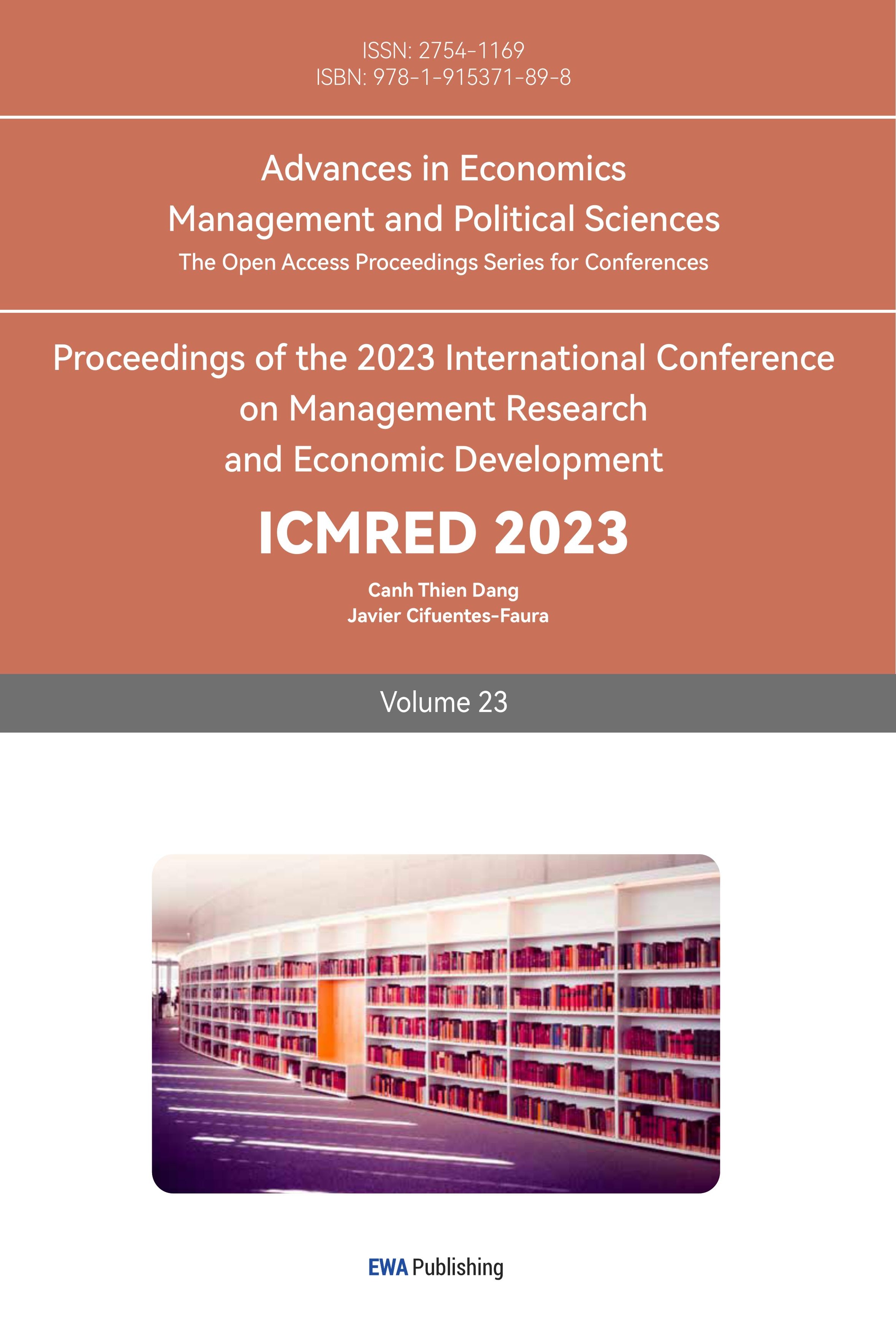References
[1]. Li Z-Xiang, Li Shuang-Mei, Zhang De-Zhi, et al. Virus prevention and control strategies in cold chain logistics in the post-epidemic era. Logistics Technology, 40(10), pp:11-15, 2021
[2]. Lin Zhenqiang. Current situation and trends of cold chain logistics park development in China. Logistics Technology and Application, 27(S2), pp:40-43, 2022.
[3]. Sun Yiling, Wang Bemeng. Problems and improvement measures of cold chain logistics cost management. Finance and Accounting Study, No.350(33),pp:119-121,2022.
[4]. Feng Yuan,Hu Dawei. Research on the construction of a cold chain distribution process model based on Petri net. Logistics Technology,31(1), pp:99-101,116, 2012.
[5]. Wen Bao. Modeling and simulation of cold chain logistics distribution process based on Petri net. Logistics Science and Technology,36(12),pp:102-105,2013.
[6]. Jan-Phillip Herrmann, Alexander Atanasyan, Felix Casser, Sven Tackenberg. A Petri Net Architecture for Real-Time Human Activity Recognition in Work Systems.Procedia Computer Science, vol.217, pp: 1188-1199,2022.
[7]. Kuldeep Kumar, Sumit, Sandeep Kumar, Lalit Kumar Singh, Alok Mishra.Predicting reliability of software in industrial systems using a Petri net based approach: A case study on a safety system used in nuclear power plant.Information and Software Technology, vol. 146,2022.
[8]. Wang Danyang,Sun Jie. Analysis of the cold chain logistics process of Shenyang Vice Food Group. China Storage and Transportation, No.159(12),pp:111-112,2013.
[9]. Wan Yulong. Construction of inter-zone structure and information system for cold chain logistics of fresh products in the post-epidemic era. Business Economic Research,2020(24), pp:86-90, 2020.
[10]. Mu Ge, Li Qiaoli, Meng Qingjun, Huang Yibin. System Modeling. Second Edition, pp: 117-136, 2013.
[11]. Berthomieu, Bernard, Peres, Florent, Vernadat, François. Time Petri Nets – Analysis Methods and Verification with TINA. Modeling and Verification of Real-Time Systems: Formalisms and Software Tools, pp:19-49, 2010.
Cite this article
Yao,J. (2023). Modeling New Cold Chain Logistics Processes in the Post-Epidemic Period Based on Petri Net. Advances in Economics, Management and Political Sciences,23,195-203.
Data availability
The datasets used and/or analyzed during the current study will be available from the authors upon reasonable request.
Disclaimer/Publisher's Note
The statements, opinions and data contained in all publications are solely those of the individual author(s) and contributor(s) and not of EWA Publishing and/or the editor(s). EWA Publishing and/or the editor(s) disclaim responsibility for any injury to people or property resulting from any ideas, methods, instructions or products referred to in the content.
About volume
Volume title: Proceedings of the 2023 International Conference on Management Research and Economic Development
© 2024 by the author(s). Licensee EWA Publishing, Oxford, UK. This article is an open access article distributed under the terms and
conditions of the Creative Commons Attribution (CC BY) license. Authors who
publish this series agree to the following terms:
1. Authors retain copyright and grant the series right of first publication with the work simultaneously licensed under a Creative Commons
Attribution License that allows others to share the work with an acknowledgment of the work's authorship and initial publication in this
series.
2. Authors are able to enter into separate, additional contractual arrangements for the non-exclusive distribution of the series's published
version of the work (e.g., post it to an institutional repository or publish it in a book), with an acknowledgment of its initial
publication in this series.
3. Authors are permitted and encouraged to post their work online (e.g., in institutional repositories or on their website) prior to and
during the submission process, as it can lead to productive exchanges, as well as earlier and greater citation of published work (See
Open access policy for details).
References
[1]. Li Z-Xiang, Li Shuang-Mei, Zhang De-Zhi, et al. Virus prevention and control strategies in cold chain logistics in the post-epidemic era. Logistics Technology, 40(10), pp:11-15, 2021
[2]. Lin Zhenqiang. Current situation and trends of cold chain logistics park development in China. Logistics Technology and Application, 27(S2), pp:40-43, 2022.
[3]. Sun Yiling, Wang Bemeng. Problems and improvement measures of cold chain logistics cost management. Finance and Accounting Study, No.350(33),pp:119-121,2022.
[4]. Feng Yuan,Hu Dawei. Research on the construction of a cold chain distribution process model based on Petri net. Logistics Technology,31(1), pp:99-101,116, 2012.
[5]. Wen Bao. Modeling and simulation of cold chain logistics distribution process based on Petri net. Logistics Science and Technology,36(12),pp:102-105,2013.
[6]. Jan-Phillip Herrmann, Alexander Atanasyan, Felix Casser, Sven Tackenberg. A Petri Net Architecture for Real-Time Human Activity Recognition in Work Systems.Procedia Computer Science, vol.217, pp: 1188-1199,2022.
[7]. Kuldeep Kumar, Sumit, Sandeep Kumar, Lalit Kumar Singh, Alok Mishra.Predicting reliability of software in industrial systems using a Petri net based approach: A case study on a safety system used in nuclear power plant.Information and Software Technology, vol. 146,2022.
[8]. Wang Danyang,Sun Jie. Analysis of the cold chain logistics process of Shenyang Vice Food Group. China Storage and Transportation, No.159(12),pp:111-112,2013.
[9]. Wan Yulong. Construction of inter-zone structure and information system for cold chain logistics of fresh products in the post-epidemic era. Business Economic Research,2020(24), pp:86-90, 2020.
[10]. Mu Ge, Li Qiaoli, Meng Qingjun, Huang Yibin. System Modeling. Second Edition, pp: 117-136, 2013.
[11]. Berthomieu, Bernard, Peres, Florent, Vernadat, François. Time Petri Nets – Analysis Methods and Verification with TINA. Modeling and Verification of Real-Time Systems: Formalisms and Software Tools, pp:19-49, 2010.









